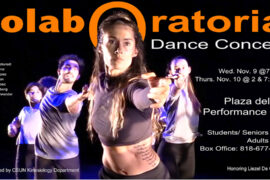Students kicked off the fall season this month with a festive Garba dance to celebrate Navratri at the Glenn Omatsu House on Tuesday, Oct. 4. Garba, a Hindu dance and religious tradition from Gujarat, India, is observed during Navratri, a religious festival to honor the Goddess, Durga. Navratri occurs before Diwali, the festival of lights, which usually falls sometime in October or November. The Hindu astrological calendar determines the dates for Diwali and Navratri.
Navratri honors the Goddess Durga over nine nights to remember her defeat of evil. Participants celebrate by performing Garba, a dance in concentric circles around her picture that recognizes her nine incarnations. Diwali also celebrates light over darkness and marks the end of exile for some deities in Hindu mythology.
Event organizer Anmol Walvekar, a third-year Anthropology, and Asian American Studies major, said, “This festival (Garba) and Diwali are some of our biggest festivals. It’s a time to dress up and dance.” And dance they did; many dressed in brightly-colored traditional clothing while hitting customary Dandiya sticks together in rhythm with the music.
Some students arrived early to paint their own Dandiya sticks. Student organizers decked the Glenn Omatsu House with colorful flower garlands called mala. They set up a photo backdrop made of vivid light-catching fabric for attendees to snap the all-important selfie.
At the heart of the event stood a carefully positioned image of the Goddess Durga, representing the only constant in the universe. Time in Hinduism is cyclical. God or, in this case, Goddess, remains the only unmoving symbol amid eternal and infinite movement.
The Goddess at the center of this celebration experienced a lot of exciting movement as attendees danced round and round for hours.
There will also be a celebration of Diwali at the Glenn Omatsu House on Monday, Oct. 24, from 5 p.m. to 9 p.m.




Comments are closed.